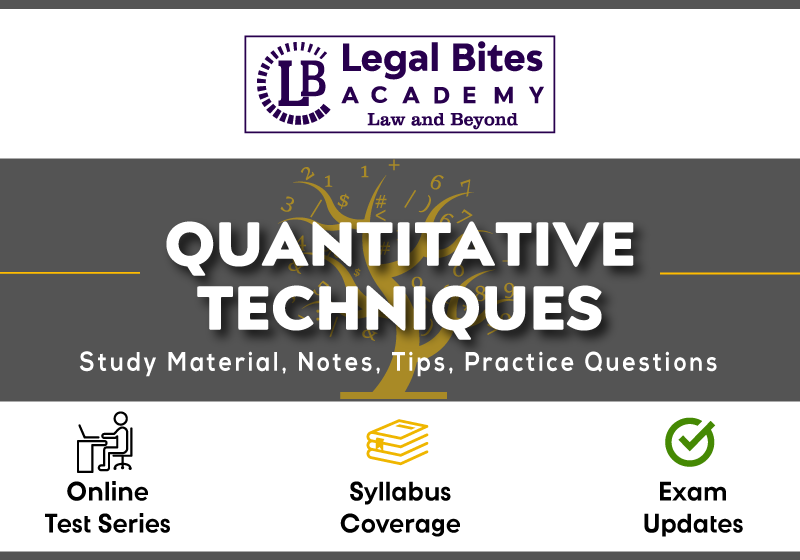CLAT UG Quantitative Techniques Exam Format and Preparation Strategies
The CLAT UG Quantitative Techniques paper holds 10% of the paper and consists of elementary-level maths. It is important for the candidate to get familiarised with the kind of questions, the language of the questions, and the methods of approaching a particular question. I. Forms of Questions Each passage will be followed by typical questions which require you… Read More »

The CLAT UG Quantitative Techniques paper holds 10% of the paper and consists of elementary-level maths. It is important for the candidate to get familiarised with the kind of questions, the language of the questions, and the methods of approaching a particular question. I. Forms of Questions Each passage will be followed by typical questions which require you to answer Tenth standard mathematics questions from areas such as: Number theory and basic arithmetic. Averages and...
The CLAT UG Quantitative Techniques paper holds 10% of the paper and consists of elementary-level maths. It is important for the candidate to get familiarised with the kind of questions, the language of the questions, and the methods of approaching a particular question.
I. Forms of Questions
Each passage will be followed by typical questions which require you to answer Tenth standard mathematics questions from areas such as:
- Number theory and basic arithmetic.
- Averages and Percentages
- Ratio and proportion.
- Mixtures and allegations.
- Time and work.
- Time, distance, and speed.
- Fraction and equations.
- Monetary evaluations.
- Probability.
- Permutations and combinations.
II. Exam Format | CLAT UG Quantitative Techniques
The Quantitative Techniques section of the UG-CLAT 2021 will include short sets of facts or propositions, graphs, or other textual, pictorial or diagrammatic representations of numerical information, followed by a series of questions. You will be required to derive information from such passages, graphs, or other representations, and apply mathematical operations on such information.
III. Preparation Strategies
- As with all the other sections of the UG CLAT 2021, practice is key in preparing for Quantitative Techniques – and in this case, luckily, you should have ready access to more than enough practice materials. The best way to prepare for this section of the UG CLAT 2021 is to go back to your tenth standard mathematics textbooks, and try and practice the questions and exercises in them as much as possible. Another good source for practice materials? The previous years’ question papers – while they may not include the additional element of requiring you to analyse a passage or graphical information and derive usable information from them, they will still help you develop the ability to perform common mathematical calculations quickly and accurately.
- When you begin preparing for Quantitative Techniques, do not worry too much about how much time you need to answer questions – the more important thing at this stage is to answer questions accurately. As you practice, and as you develop a habit of being able to derive accurate answers, you can start focusing on speed. At this stage, it should be relatively easier for you to answer questions more quickly since you have already figured out how to answer them accurately!
- Whenever you attempt a set of practice questions or a sample test, don’t just look at the answers to find out if you were right or wrong – always make sure you go through the solution as well, to see if the manner in which you solved the question can be improved upon. While you may have found the right answer to a question, it is quite possible that someone else has figured out a quicker or easier way to do so, and it would benefit you to understand that method of solving the question as well.
Source: Official Website – Consortium of National Law Universities, Available Here
Admin Legal Bites
Legal Bites Study Materials correspond to what is taught in law schools and what is tested in competitive exams. It pledges to offer a competitive advantage, prepare for tests, and save a lot of money.

